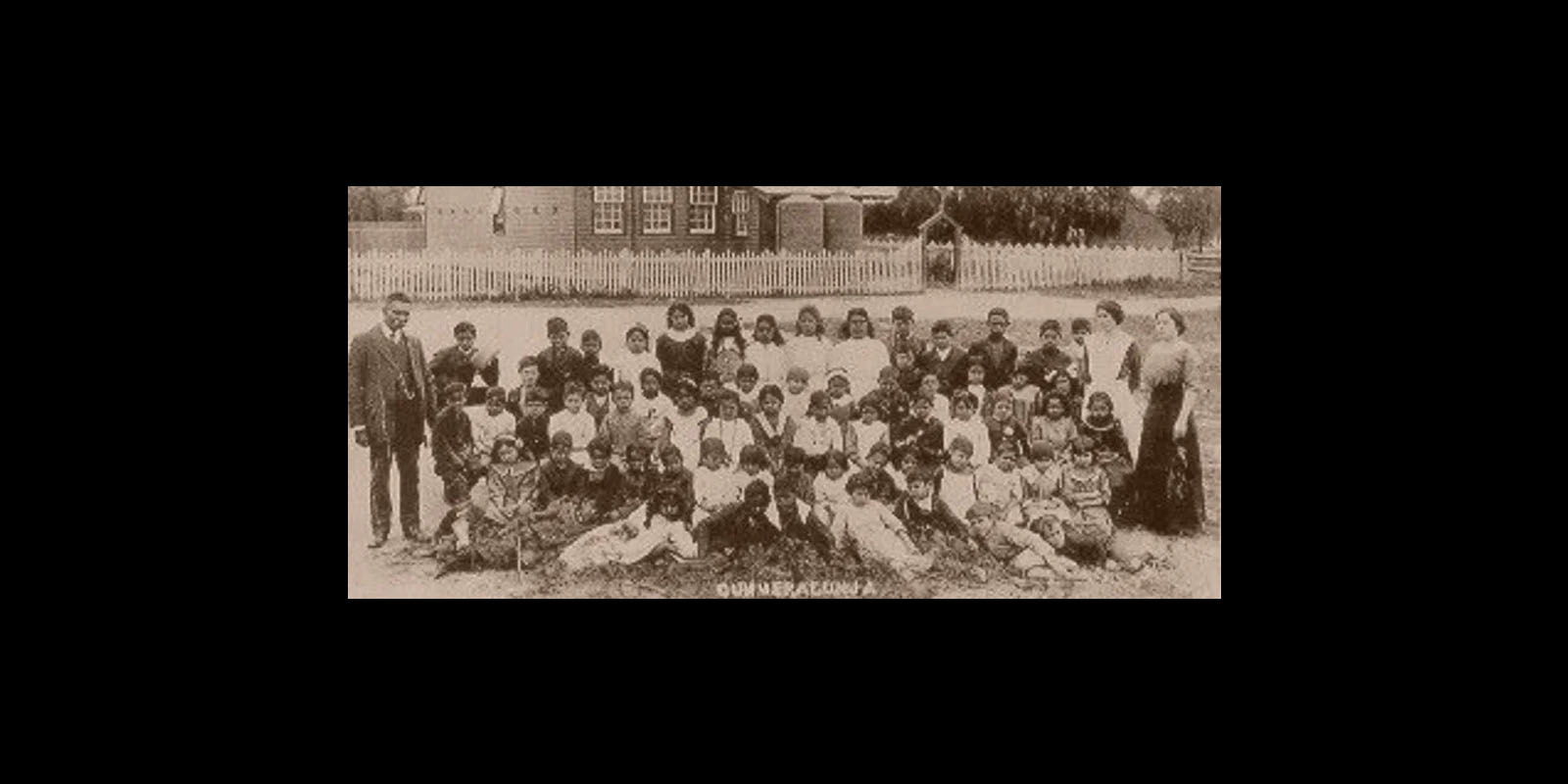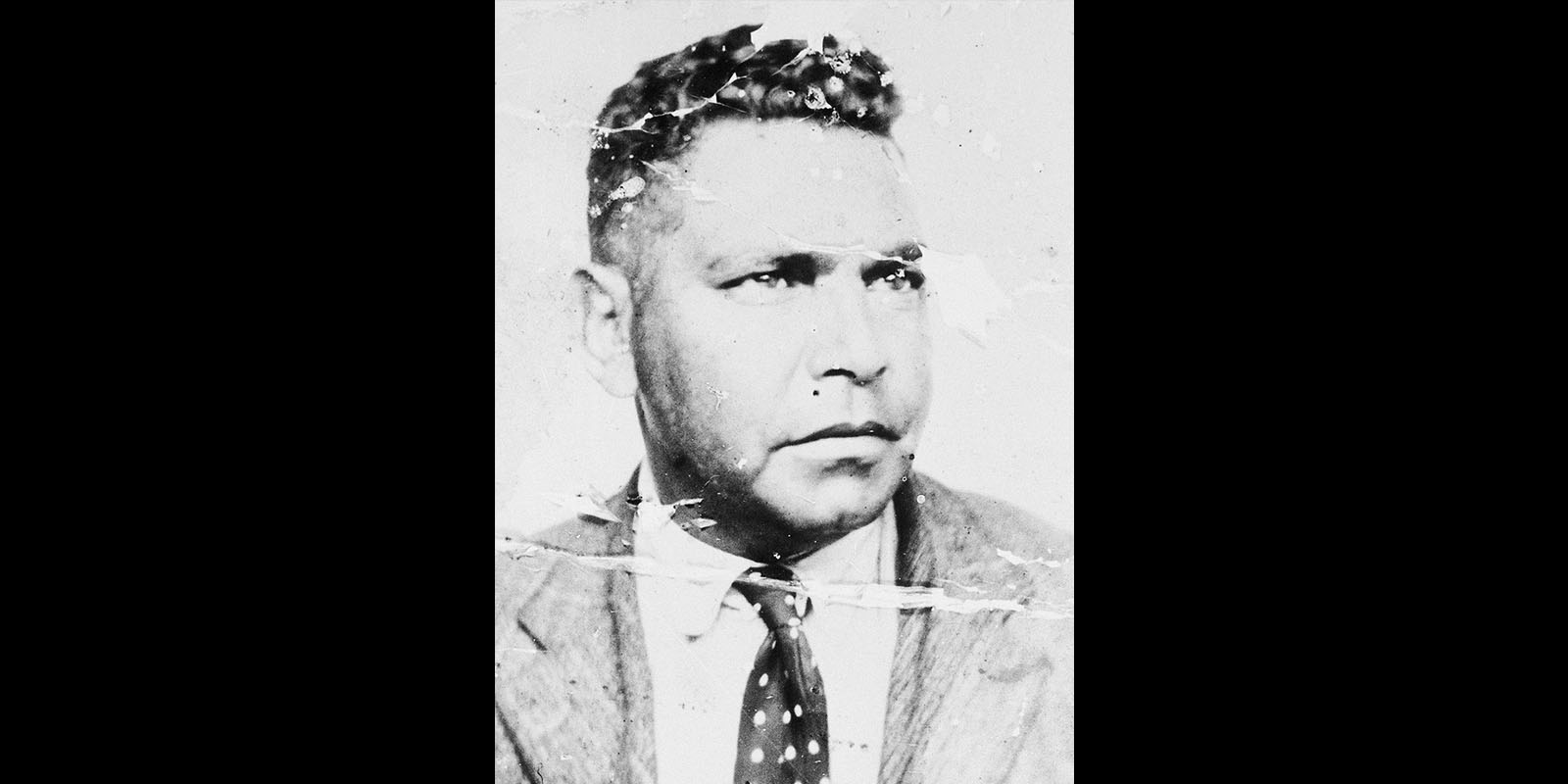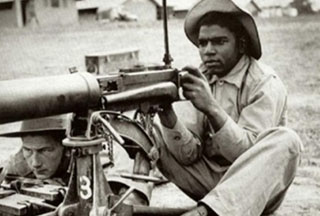Cummeragunja Aboriginal Station was established on the NSW side along the Murray River on Yorta Yorta/Bangerang Country. Cummeragunja became home to many Aboriginal people.
To learn more about Aboriginal stations check out our history timeline entry Creation of reserve system.
Opening
Maloga Mission was established in 1870 by Daniel Matthews. However, residents eventually grew tired of the strict religious lifestyle and treatment. They petitioned the Governor at the time for the creation of a new reserve and were granted 1800 acres to produce a farm in 1888.
Life on Cummeragunja was difficult, residents suffered from illnesses and were threatened with expulsion and they went through many short term managers until 1894 when George Harris was appointed manager. Harris did not necessarily improve conditions for residents however he did divide the station amongst the families at Cummeragunja – 20 farm lots that were 40 acres each.
After this, things improved slightly. The station’s conditions were improving and Cummeragunja became a productive farm, producing wheat, wool and some dairy products. The residents led a lot of this work with the aim of self-sufficiency and the station finances were being directed back into the community for community benefit.
However this did not last long. In 1909 the Aborigines Protection Act was passed, giving the Aborigines Protection Board full control over the lives of mob living in new South Wales. In 1915 the NSW Aboriginal Protection Board gained even more control over the Station disbanding its committees and confining the residents to more restrictive conditions.
As a result of the change in management, life at Cummeragunja changed drastically. Those who worked were given inadequate and unhealthy rations, children were removed and forced into domestic work and any funds raised went straight to the Board.


Image source: Cummeragunja, KoorieHistory.com
Closure
Residents walk off in protest
In 1939 the residents decided to take a stand and the first mass strike of Aboriginal people occurred. Many of the residents feared the current station manager Arthur McQuiggan and so they called on former resident Uncle Jack Patten to return and help them. When he returned, he spoke to many of the residents, informing them of the government’s plans to continue to remove their children and explained what their rights were.
Following this, on the 4th of February in 1939, an estimated 200 residents of Cummeragunja Station walked out of the station in a strike to protest the horrible living conditions and the governments control of the station they had set up.
On the day of the walk off Uncle Jack Patten was arrested for ‘inciting Aborigines’ and removed from the station. Following his arrest, the residents grabbed their belongings and walked off the station in a mass strike.
Many of those who walked off crossed the Murray River into Victoria, settling in towns like Barmah, Echuca and Mooroopna while others continued down towards the city.
In 1953, Cummeragunja was officially closed as a station however a few residents remained and began farming on the land again.


Image source: Jack Patten, AIATSIS Collection HORNER2.J01.DF-D00020633. 'We hereby make protest', AIATSIS.
Watch
- First Australians: Season 1 Episode 6, A Fair Deal For A Dark Race (SBS OnDemand
Yorta Yorta man William Cooper forms the Australian Aborigines League in 1933 to continue his life-long campaign for equality.

